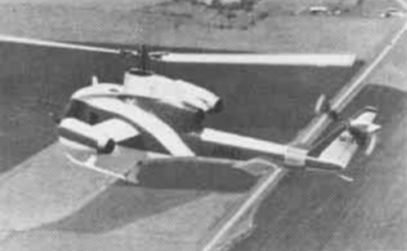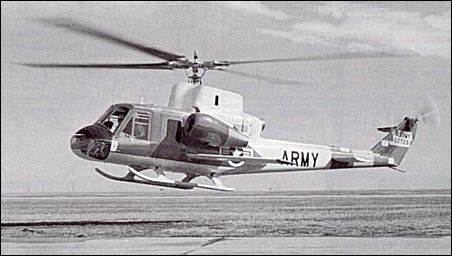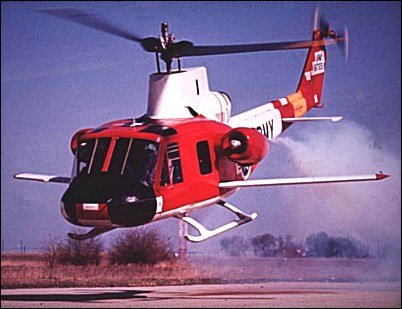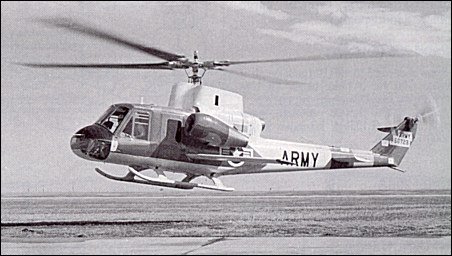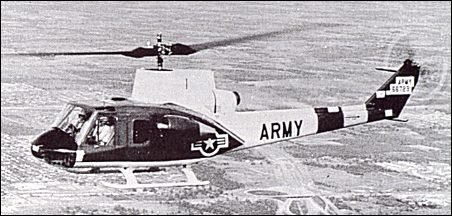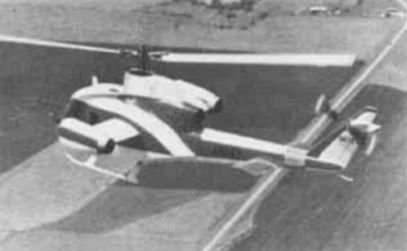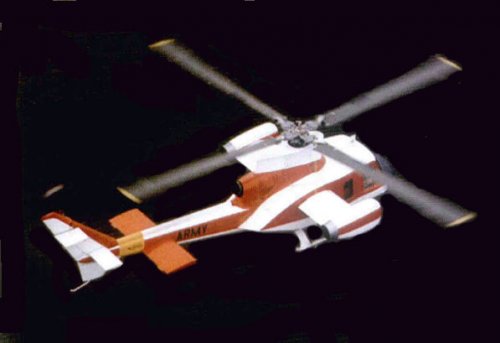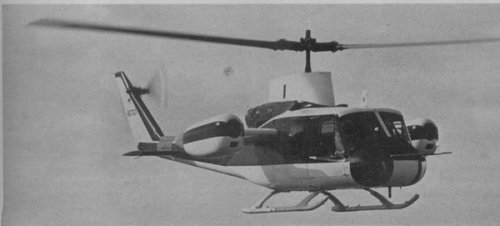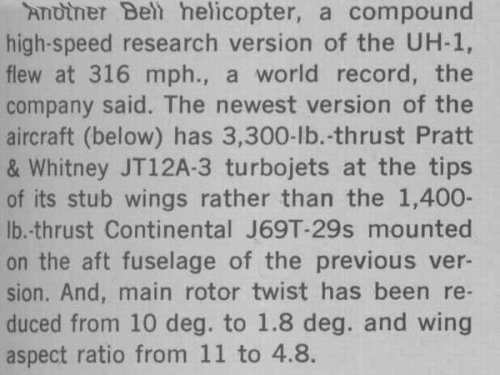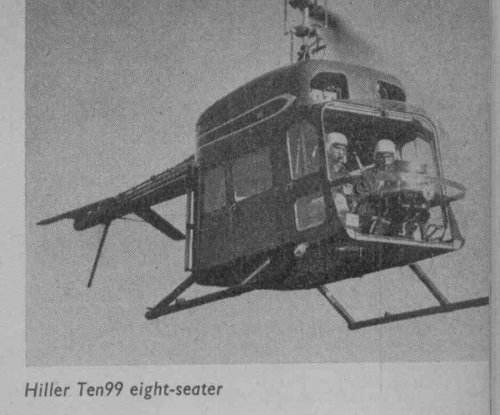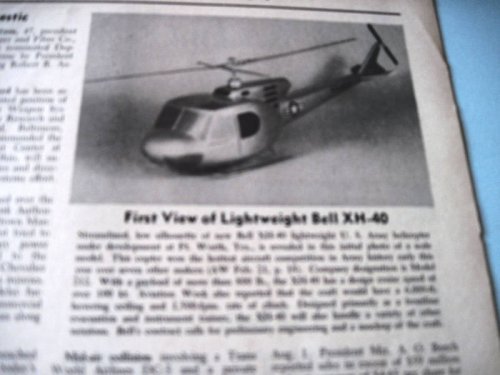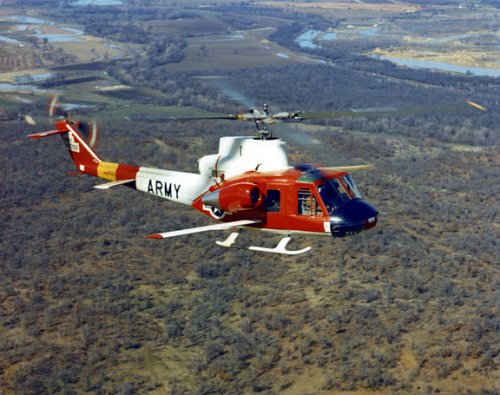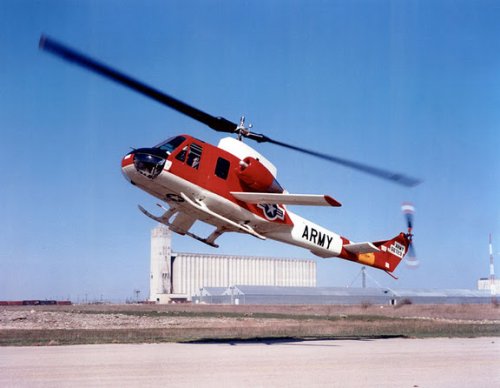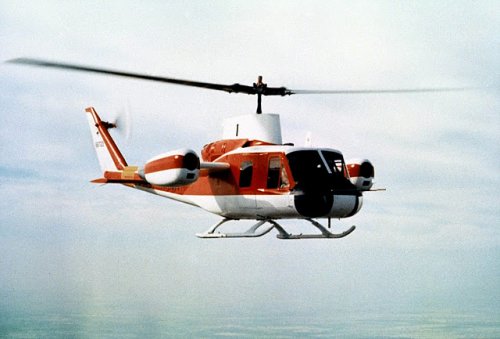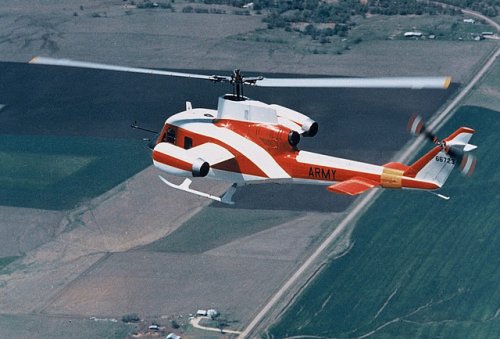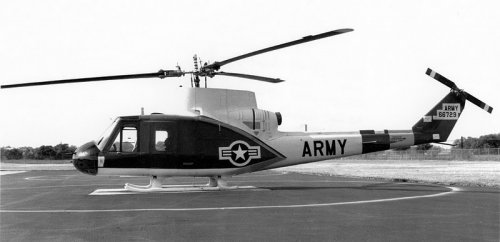From vertiflite, Summer 2006, and, yes, there was a 3-bladed rotor :
"August 7, 1961. Funded under;i U.S. Army 'I'ransportation Research Command (TRECOM) contract
for a high-performance research helicopter, Bell modified a YH-40 helicopter with UH-1B dynamic
components. The company designation was Model 533. The primary objective of the project was to
evaluate various rotor systems and methods of drag reduction. Initial modifications included the
addition of fiberglass honeycomb aerodynamic fairings on the rear fuselage, streamlined fairings for the
landing skids, a cambered vertical fin on the tailboom to unload the tail rotor, and an in-flight tiltable
rotor mast protruding from a large, neatly-faired structure above the cabin. Shortly after the aircraft
achieved its first flight on August 10, 1962 with the standard UH-1B 44 ft two-bladed rotor, another
rotor systerm was tested on the Model 533: a gimbal-mounted 42 ft diameter, three-bladed rotor,
which could be m mounted to the mast either rigidly or through a gimbal. The control system was
modified to accommodate the tilting pylon systemand to be adaptable to both the 2-bladed and
3-bladed rotor system. True level flight airspeeds of 150 knots (173 mph) were achieved with the
standard 2-bladed rotor. Having established the basic benefits of drag reduction, the U.S. Army funded
a second phase with the main purpose of investigating the effects of auxiliary thrust. Bell used two
920 lb thrust Continental J69-T-9 turbojet engines in pods attached closely to each side of the
fuselage for this purpose. The 2-bladed rotor was chosen for this program and the standard UH-1B
blades were replaced with an experimental set. A pair of sweptback wings spanning 26.8 ft was fitted
to the lower fuselage. These wings had groundadjustable sweep and could be tilted in flight. The tilt
mechanism was later coupled to the collective control to avoid excessive wing lift and attendant rotor
rpm control problems during autorotation. After exploratory testing in pure helicopter configuration, the
wings were removed and the turbojet engines were fitted. Flight tests in this configuration began on
21 October 1963. An additional elevator was soon installed on the vertical fin, opposite the tail rotor,
since the standard elevators were now located in an area of turbulent airflow from the jet engines. The
full-up configuration, with wing and auxiliary jets installed was first flown on 2 Marcn 1964. A level flight
true airspeed of 214 mph was achieved using maximum auxiliary thrust. Contracted testing was
cornpleted in April of 1964. Immediately following the contracted tests, the 2-bladed rotor was fitted
with special tapered tip blades under a Bell Helicopter independent research program. A level flight true
airspeed of 222 mph was attained using maximum auxiliary thrust.
To provide even more thrust, the J69 turbojets were removed and the Model 533 was refitted with
more powerful 1,700 lb static thrust J69-T-29 turbojet engines, the same as those used in the Ryan
BQM-34A Firebee target drone. The significantly increased thrust allowed the aircraft to reach higher
speeds, becoming the first rotorcraft in history to exceed a speed of 200 kt (230 mph), reaching 236
mph on October 15, 1964. Six months later, it became the first ta reach 250 mph in level flight on April
6, 1965. Along with the higher speeds, test pilots demonstrated impressive maneuverability with the
Model 533, routinely performing 26 turns at 60 degrees of bank. Early in 1968, ihe U.S. Army awarded
Bell a follow-on contract with the aim to expand the envelope even further and replace the J69
turbojets with much more powerful 3,300 1b thrust Pratt R Whitney JT12A-3 turbojets. The wings that
had previously been fitted were removed and replaced by a new unswept pair upon which the new
engines were wingtip-mounted. Additionally, the shape of the main rotor fairing was altered. The
longitudinal rontrol system was totally changed, allowing a changeover from standard helicopter cyclic
controls to pure fixed wing elevator type controls. On 15 April 1969, the 533 attained the incredible
speed of 316 mph (274.6 knots) in this configuration. The final test phase of the program involved
replacing the two-bladed main rotor with a four-bladed flex-beam rotor system. At the completion of
testing, the Model 533 was permanently retired, having collected an enormous amount of data for
possible use in future compound helicopter projects. Today, the sole example of the Model 533 is
displayed outside the main building of the U.S. Army's Aviation Applied Technology Directorate (AATD)
at Ft Eustis, Virginia. "

